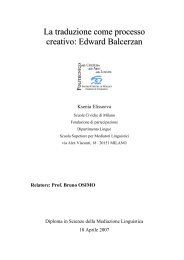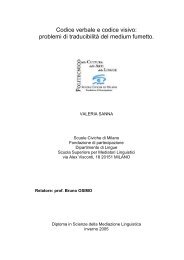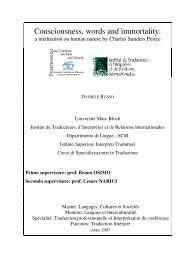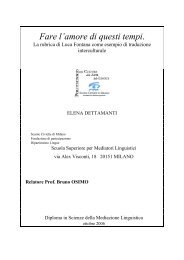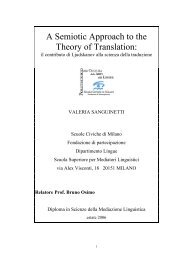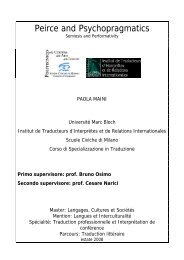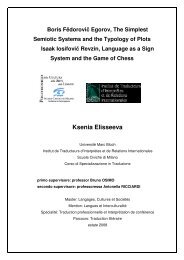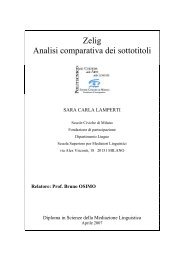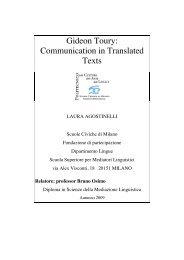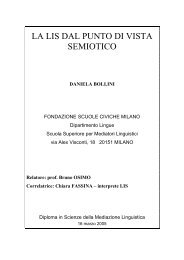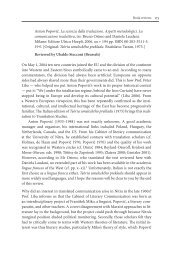Relatore: Professor Bruno OSIMO - Bruno Osimo, traduzioni ...
Relatore: Professor Bruno OSIMO - Bruno Osimo, traduzioni ...
Relatore: Professor Bruno OSIMO - Bruno Osimo, traduzioni ...
You also want an ePaper? Increase the reach of your titles
YUMPU automatically turns print PDFs into web optimized ePapers that Google loves.
processes. Due to the built-in limitation of the introspective method,<br />
psychologists turn away from it and from all associated theories. But<br />
introspection was a central method in studying cognitive processes and<br />
consequently psychological research turned away from cognitive processes too<br />
(Someren, Barnard and Sandberg 1994).<br />
Understandable counter-reactions followed. One of them was the<br />
behaviorist paradigm (1930s) which promoted psychology as a hard positivist<br />
science. Its purpose was to limit psychological research to objectively<br />
observable behavior. This entailed abandoning subjective research methods<br />
like introspection, because “the objective, i.e. scientific, study of the human<br />
behavior could only be based on the analysis of the relationship between<br />
external stimuli and behavioral responses” (Jääskeläinen 1999: 55).<br />
Behaviorism dominated American psychology, while European<br />
researchers, particularly representatives of the Gestalt Psychology school of<br />
thought, had a slightly different view of how to do psychology. Although they<br />
also rejected classical introspection as a research method, they wanted to<br />
study thought and not just behavioral responses to stimuli. They also<br />
developed more sophisticated methods of data collection on the thought<br />
process: phenomenological observation, phenomenological introspection, and<br />
the method of thinking aloud (Börsch 1986). The beginnings of the cognitive<br />
paradigm are usually dated in the mid 1950s and picked up where Gestalt<br />
Psychology left off (due to the beginning of the Second World War)<br />
(Jääskeläinen 1999).<br />
3. 2. ERICSSON AND SIMON’S MODEL<br />
Thinking aloud as a method for scientific research rests on a solid<br />
scientific foundation in cognitive psychology, a science that studies human<br />
cognition, i.e. how humans receive, store, manipulate, and use knowledge.<br />
The theoretical framework for TAP experiments is provided mainly by the<br />
work of Ericsson and Simon (1984). These scholars base their theory of<br />
verbalization on the information-processing approach in cognitive psychology,<br />
13



